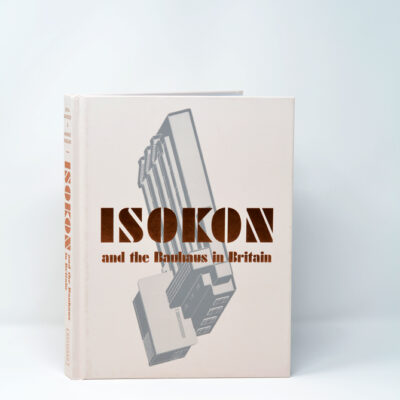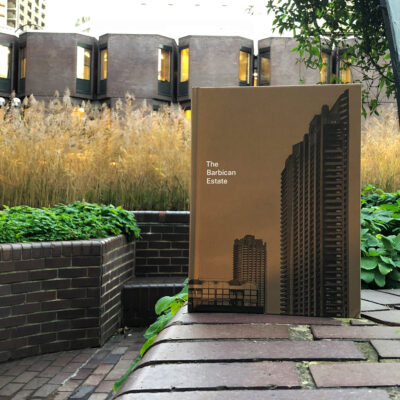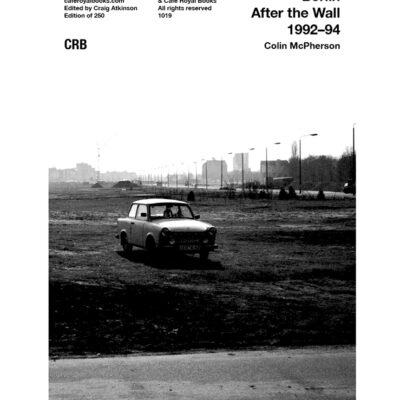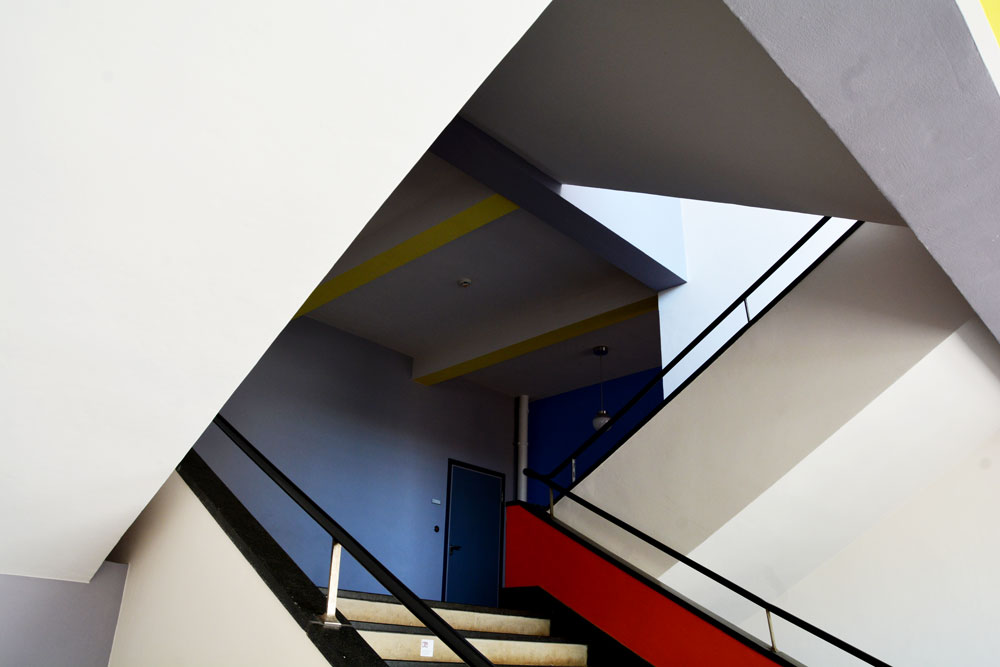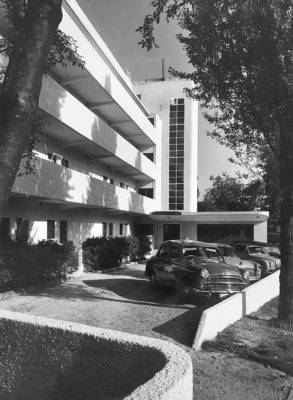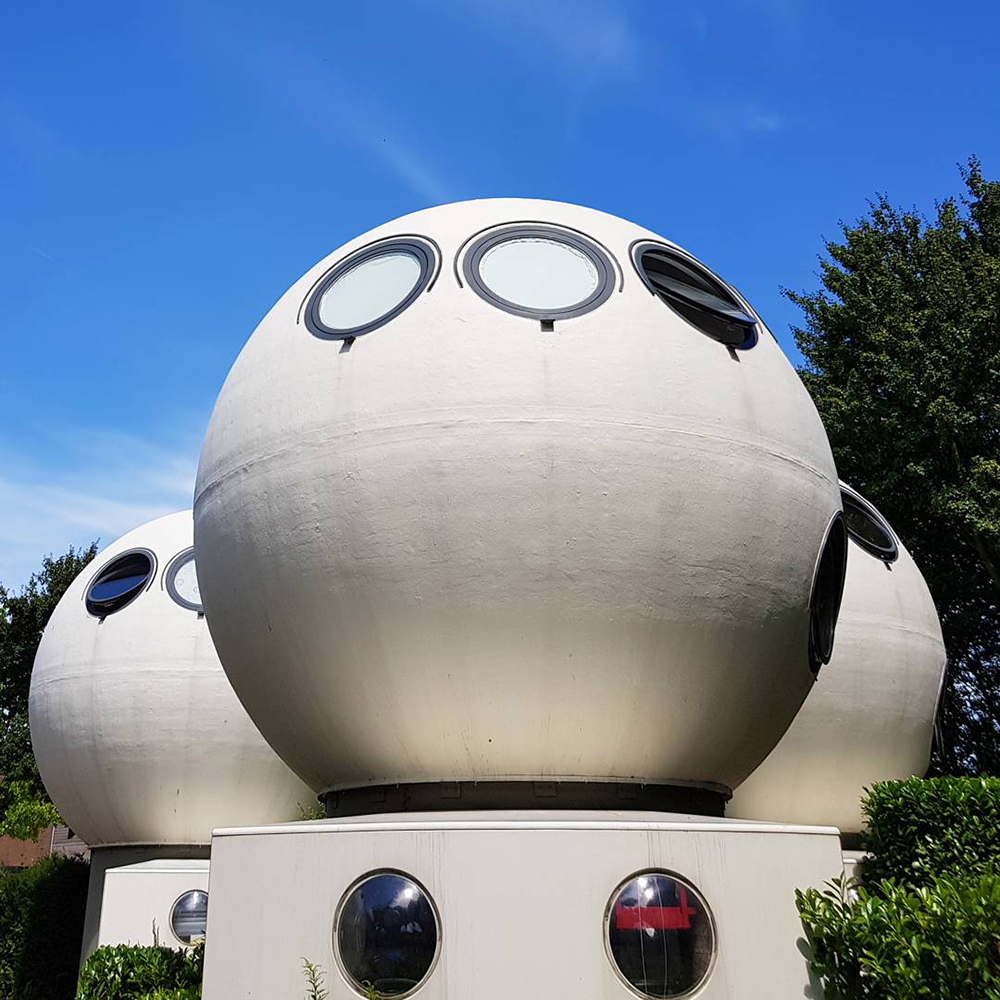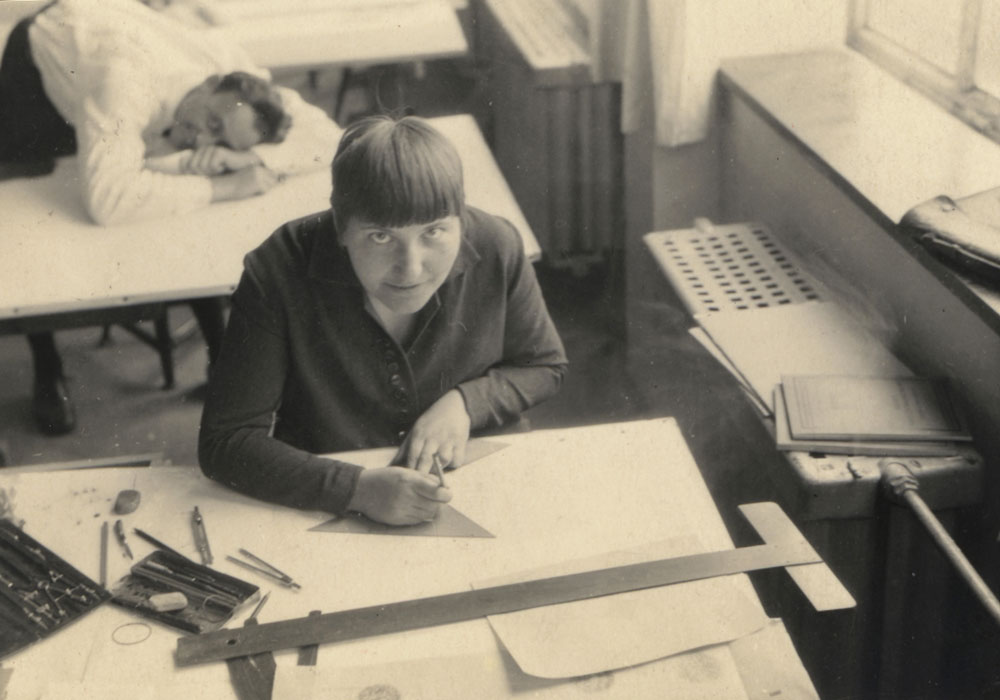
Lotte Stam-Beese
Lotte Stam Beese Architect, Photographer and Urban Planner 1903-1988
Born in Reisicht (Rokitki) Silesia to a lower-middle-class family, after finishing school she learnt to draw at the Breslau Academy of Fine and Applied Arts, she then went to the Deutscher Werkstatte in Hellerau, Dresden. She got a job in their office as a typist but was also able to take part in their weaving and textile classes. The school had links to the Bauhaus and persuaded by former Bauhaus students she decided to apply, she was accepted into the school in 1926, she was 23 which was more mature than the typical student. This was a moment when she entered an entirely different world, taught initially by Josef Albers, Joost Schmidt and Kandinsky. She progressed to the weaver’s classes and was taught by Gunta Stölzl and then moved to the architecture class where she is credited as the first female to enrol. She attended classes led by Hans Wittner and Swiss architect, Hannes Meyer who had created the course. She was captivated by Meyers ideas about the ‘new theory of building’,
Meyer who followed Gropius as Director of the Bauhaus was also considered more of a visionary than Gropius about the idea that women could become more than weavers.
It was her relationship with the married Meyer who was considerably older than her that altered her life forcing her to suddenly leave her studies in December 1928. Teacher and pupil were both put under enormous pressure and Hannes Meyer decided that the only way of sorting the problem out was to ask her to leave the Bauhaus, can you imagine the uproar if similar circumstances today a student was asked to leave whilst her Head of School remained in post? That being said, he did not leave her totally stranded and helped her find work in a variety of architectural practices, with Hugo Häring (founding member of Der Ring and CIAM) and Otto Neurath and then in Meyer’s own practice (Meyer was in the habit of employing Bauhaus students) but this was not a sustainable longterm idea.
In April 1930 Meyer introduced Lotte Beese to the important Czech modernist Bohuslav Fuchs. Logistically this meant leaving Germany and moving to Brno in Czechoslovakia. The relationship continued despite the distance but was not in good shape and in July 1931 Lotte gave birth to Hannes Meyer’s child, the couple were living separately but were still in communication, Lotte hoped that the baby would ‘bridge the gulf’ between them.
After having the baby Lotte found herself isolated, she did not return to work having fallen out with Bohuslav Fuchs over maternity leave which ended up with lawyers involved. She became more and more immersed in the local communist scene, this was not a new interest, she and Meyer and other fellow Bauhaus students were highly politicized. Now Lotte Beese had lifted her head above the parapet as an activist, involved in local demonstrations, and speaking from platforms. This brought her onto the local police radar. She was hauled into the police several times for questioning, as a resident rather than a citizen there was the potential that she could be of being asked to leave Czechoslovakia.
It was 1932 Lotte was fully away of political changes in Germany and how some communist Bauhaus students were on Nazi target lists, returning to Germany was not a viable option, instead, she ideologically opted to relocate to the USSR in April 1932. There is a suggestion that Karel Teige, the Czech avant-garde writer who both she and Hannes Meyer were friendly with may have helped facilitate her move to the Soviet Union to the city of Kharkiv in the Ukraine. Lotte’s plan was to leave her son in Brno with Czech architect Jaromír Krejcar and his wife with whom she shared her communist sympathies and to go as a forward party to Kharkov to set up a home for the two of them (Mayer had dismissed the idea of the three living together in some form in Moscow). Lotte took a job in Urban Planning with Giprograd. She returned to Brno to collect her son and a new chapter began in Kharkiv – for single mother and son.
A chance meeting with Mart Stam who had been a teacher of the Bauhaus led Lotte to the May Brigade, Ernst May’s project in the Soviet Union. Ernst May was under contract for three years to design new cities in the Soviet Union, he gathered around him a group of like-minded former Bauhausers. One of the projects was to create the city of Magnitogorsk in the Urals, the industrial heart of the country. An urban planner and visionary Lotte Beese was faced with unexpected challenges. There is a story that designed prefabricated housing was delivered to a group of residents of Magnitogorsk. They contacted Lotte’s office, questioning why the sink was fixed to the ground in the bathroom, it forced them to stoop to wash. Lotte realised that the residents did not recognise a functioning toilet. The work had challenges far greater than building from scratch – they were tasked with sometimes dealing with highly polluted areas.
Stam decided in 1934 to return to Holland taking Lotte Beese with him as his new wife.
Postwar, Lotte’s career flourished though the marriage did not last. In 1946 she was made Director of the School of Urbanism at the University of Architecture in Amsterdam. Her involvement in the planning of the suburbs of postwar Rotterdam brought her to wider public attention, her particular focus was the planning of the districts of Pendrecht (1948-1952) and Ommoord (1961-1962) Kleinpolder (1946-1952) Westpunt in Hoogvliet (1956-1957) and Lage Land (1961-1962). Her imaginative designs included housing for senior citizens, a new approach to how one considers a neighbourhood. She customized a house in Krimpen aan den IJssel in the early 1960s which she remained in until her death in 1988.
Lotte Stam-Beese is frequently thought of in the context of the Bauhaus and Rotterdam but there was so much more to her.
Recipient of the Wolfert van Borselen Medal
btw that’s Helmut Schultze on the desk behind her! He was a student of Moholy Nagy and collaborated with Marianne Brandt designing vases, lamps and metal objects, their products are now produced by Alessi
Click Here To Visit The Greyscape Architectural A-Z
https://www.greyscape.com/a-z/




